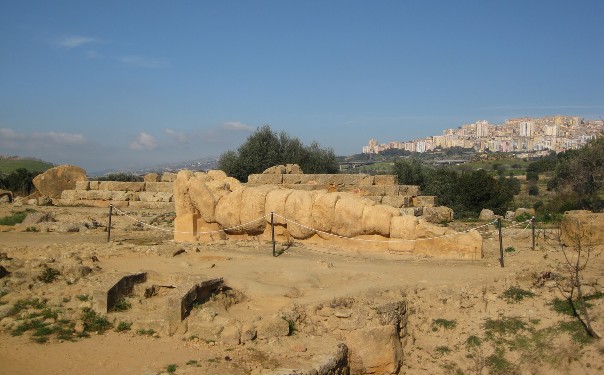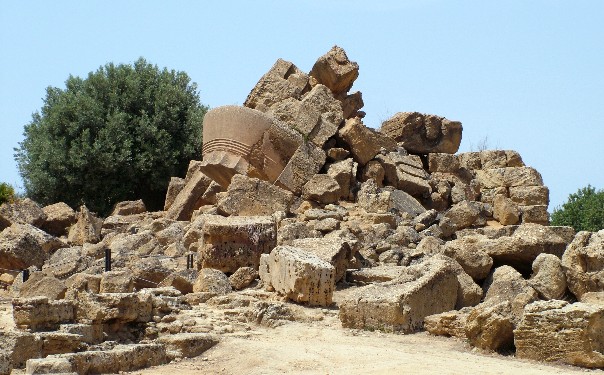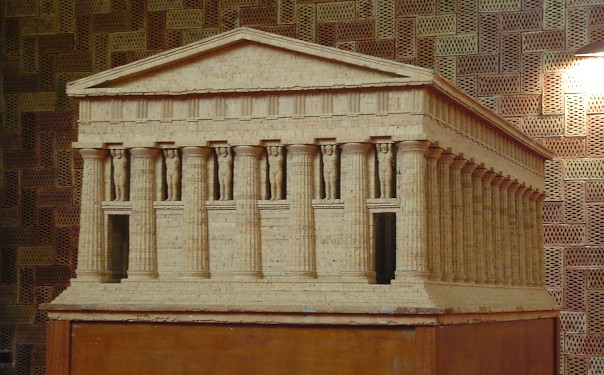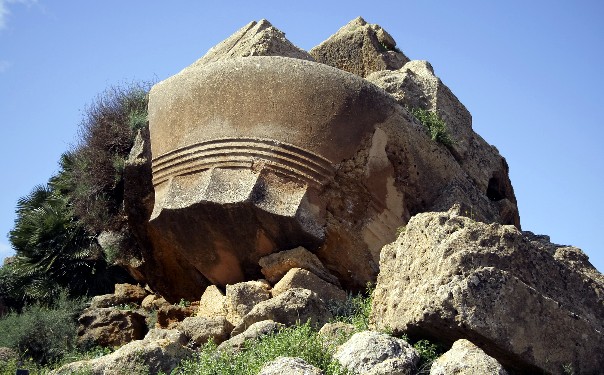Temple of Jupiter or Olympian Zeus
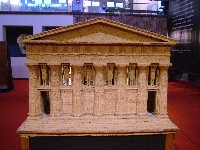 The Temple of Olympian Zeus (or Olympeion; known in Italian as the Tempio di Giove Olimpico) in Agrigento, Sicily was the largest Doric temple ever constructed, although it was never completed and now lies in ruins. It stands in the Valle dei Templi with a number of other major Greek temples.
The Temple of Olympian Zeus (or Olympeion; known in Italian as the Tempio di Giove Olimpico) in Agrigento, Sicily was the largest Doric temple ever constructed, although it was never completed and now lies in ruins. It stands in the Valle dei Templi with a number of other major Greek temples.
The temple, whose structure is still under debate, measured 112,70 x 56,30 m at the stylobate, with a height of some 20 m. The whole construction was made of small stones blocks, which has created uncertainty to the global size of the building. According to Diodorus, the columns' grooves could easily house a man: their height has been estimated from 14.50 to 19.20 meters. It stood on a five-stepped platform approximately 4.5 m above the ground. The enclosure occupied a large basement with five-step krepidoma. The front of the temple had seven semi-columns, an archaic feature that precluded the addition of a central door. The long sides had fourteen semi-columns.
Unlike other temples of the time, the outer columns did not stand on their own as a freestanding peristyle but were engaged against a continuous curtain wall needed to support the immense weight of its entablature. In between the columns were colossal atlases, stone figures standing some 7.5 m high. The figures appear to have alternated between bearded and clean-shaven figures, all nude and standing with their backs to the wall and hands upstretched above their heads.
The exact positioning of the atlases has been the subject of some archaeological debate, but it is generally believed that they stood on a recessed ledge on the upper part of the outer wall, bearing the weight of the upper portion of the temple on their upheld hands. One of the fallen atlases has been reassembled in the nearby archaeological museum and another can be seen on the ground among the ruins of the temple. Attempts to make a detailed reconstruction of the telamons' original appearance have been hampered by their poor condition; they are heavily eroded and all of their feet appear to be missing.
The atlases are an exceptionally unusual feature, and may possibly have been unique in their time. They have been interpreted by some as symbolising the Greek enslavement of the Carthaginian invaders, or have even been attributed to Egyptian influences. Joseph Rykwert comments that "the sheer size of the temple seems to confirm the reputed extravagance of the Akragans, their love of display."
The presence of windows between the columns is not confirmed. The cell was formed by a wall connectiong 12 pilasters on each long side, the angular ones enclosing the pronaos and the episthodomos. The entrance of the cella was granted by an unknown number of doors. The interior was inspired by Phoenician-Carthaginian architecture; it comprised an immense triple-aisled hall of pillars, the middle of which was open to the sky. The roof was probably never completed, though the pediments had a full complement of marble sculptures. The eastern end, according to Diodorus Siculus' enthusiast description, displayed a gigantomachy, while the western end depicted the fall of Troy, again symbolising the Greeks' triumph over their barbarian rivals.
In front of the eastern façade is the pilasterd basement of the huge high altar, measuring 54,50 x 17,50 m.

